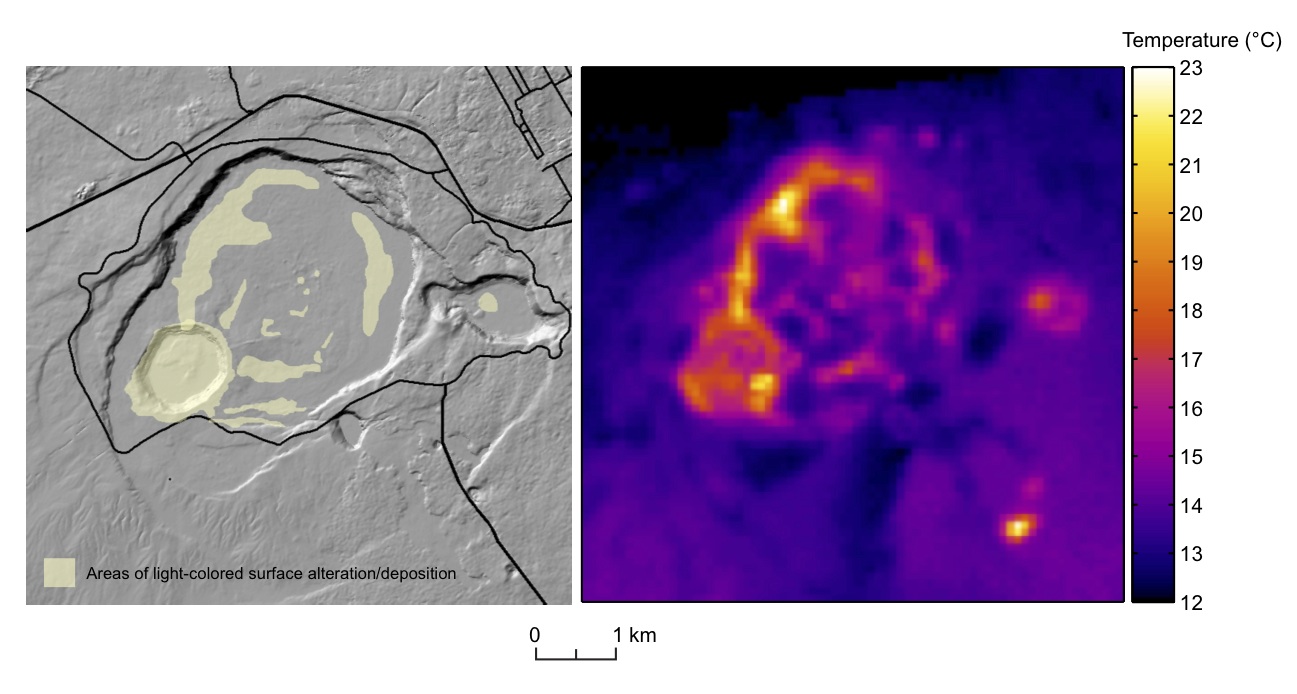An analysis of data from Terra’s Advanced Spaceborne Thermal Emission and Reflection Radiometer (ASTER) instrument mapped the thermal characteristics of Hawaii’s Kilauea, Mauna Loa, Mauna Kea, Hualãlai, and Haleakalã volcanoes between 2000 and 2010. Images for all five areas were compiled and stacked to provide time series and temperature trends. Thermal areas were conspicuous on Kilauea, shown here, and Mauna Loa. The image on the right was produced by “œstacking” 42 individual surface kinetic temperature measurements of the Kilauea crater. The only significant change in thermal activity noted in the study period is the opening of the Halema”˜uma”˜u ventat Kïlauea’s summit in 2008. Researchers observed several small thermal anomalies that coincidewith pit craters on Hualälai. The anomalies most like result from the sheltered nature of the depression, but closer inspection is warranted to determine if genuine thermal activity exists in the craters. Thermal areas were not detected on Haleakalä or Mauna Kea.
Patrick, M.R., and Witzke, C.-N., 2011, Thermal mapping of Hawaiian volcanoes with ASTER satellite data: U.S. Geological Survey Scientific Investigations Report 2011-5110, 22 p., available at http://pubs.usgs.gov/sir/2011/5110/.


